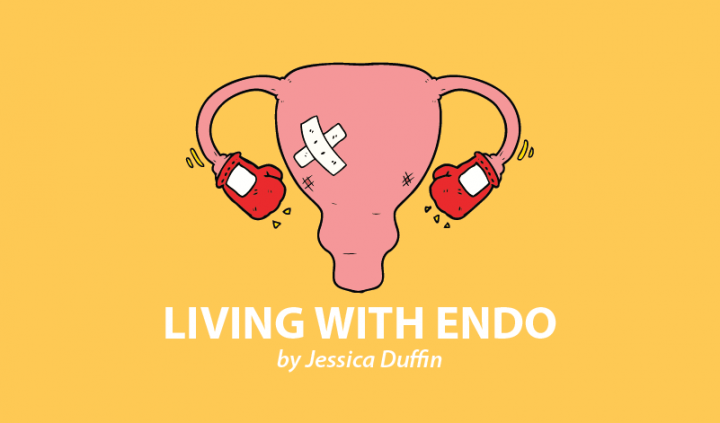A lot can change in a year. Even more can change in four, which is almost how long I’ve been writing for Endometriosis News.
And now, I’m writing to tell you that Endometriosis News is closing its doors for the time being. The site will still be available to access, but there will no longer be any new content, be it news, columns, or scientific updates.
Because of this, I wanted to ensure that if you stumble across this site and are new to my work, I’ve left you with some kind of map to navigate your future with endometriosis.
When I first started writing for Endometriosis News, I had already been on my own endometriosis healing journey for a couple years. I had run endometriosis support groups and worked for the U.K.’s leading endometriosis charity, but when I look back on my first columns, I can see how much I still had to learn.
I began this column as a space to share what was working for me and what I was learning, but there were still many dots to connect.
Since then, my life has radically changed. I’ve been dedicated to studying endometriosis and have qualified as a women’s health coach, specializing in endometriosis and a common comorbidity, small intestine bacterial overgrowth (SIBO). I have trained with some of the world’s leading specialists in these areas, and as a result, my own dots are now all connected. I hope that by sharing the following, I can help you connect some of yours.
Don’t assume all of your symptoms are caused by endometriosis
Because endo is a chronic condition that can affect multiple parts of the body, we’re often told that our array of symptoms is just part of life with this disease. This may mean we stop looking for answers when the truth is that there is often more to blame than just the endometriosis lesions.
If you’re struggling with symptoms like heavy bleeding, clots in your period, terrible period pain, PMS, and bloating, look into a hormonal imbalance that results in estrogen dominance. If any of these symptoms resonate with you, it’s worth checking out. You may have low levels of progesterone, high levels of estrogen, or both. These issues can cause a host of symptoms and affect both your overall health and your reproductive health, so identifying why these hormonal imbalances are happening and treating the root cause is key.
Equally, if you feel exhausted no matter how many hours of sleep you get, struggle with insomnia, feel tired but wired, and are anxious, depressed, or overwhelmed, consider getting your cortisol levels checked. You may be struggling with hypothalamic-pituitary-adrenal axis dysfunction.
Check for SIBO (and other gut health infections)
This is the most important message in this column: Please, please check your gut.
Small intestine bacterial overgrowth is a condition in which bacteria that normally grow in the large intestine get stuck in the small intestine and accumulate there. The bacteria cause our food to ferment, and release gases that lead to bloating, constipation, acid reflux, and diarrhea. SIBO can also cause serious issues such as nutrient deficiencies, nerve damage, and mental health problems.
One study published in 1998 in Fertility and Sterility found that 40 of 50 endometriosis patients have bacterial overgrowth. The toxins from SIBO have been found in the pelvic cavities of people with endo, and a 2015 study published in Reproductive Sciences showed that these toxins contribute to endometriosis growth.
I could write many more columns about this connection — and I have! So if this interests you, start here, and have a listen to my podcast series on the endo belly.
Reduce your inflammation
I talk about SIBO a lot. I talk about inflammation a lot, too.
Endometriosis is an inflammatory disease, and inflammation is both the fuel and the fire when it comes to endometriosis growth. Chronic inflammation can worsen endometriosis symptoms, especially pain.
The key to managing endo is lowering inflammation. Luckily, most of my past columns are about that!
Get structural support
If you’ve had abdominal surgery, I’m afraid it’s likely that you have adhesions. Adhesions are weblike collagen structures that form internally to knit wounds back together, but sometimes they go too far, distorting organs and muscles and causing serious pain and dysfunction.
Also, if you’ve lived with chronic pain for some time, you may struggle with pelvic floor dysfunction, too.
Even if your endometriosis has been fully excised, you may still experience issues related to these two problems sooner or later, so I advise that you get assessed for adhesions by a visceral manipulation therapist and get your pelvic floor examined by a pelvic floor physiotherapist.
***
Note: Endometriosis News is strictly a news and information website about the disease. It does not provide medical advice, diagnosis, or treatment. This content is not intended to be a substitute for professional medical advice, diagnosis, or treatment. Always seek the advice of your physician or other qualified health provider with any questions you may have regarding a medical condition. Never disregard professional medical advice or delay in seeking it because of something you have read on this website. The opinions expressed in this column are not those of Endometriosis News or its parent company, BioNews, and are intended to spark discussion about issues pertaining to endometriosis.

